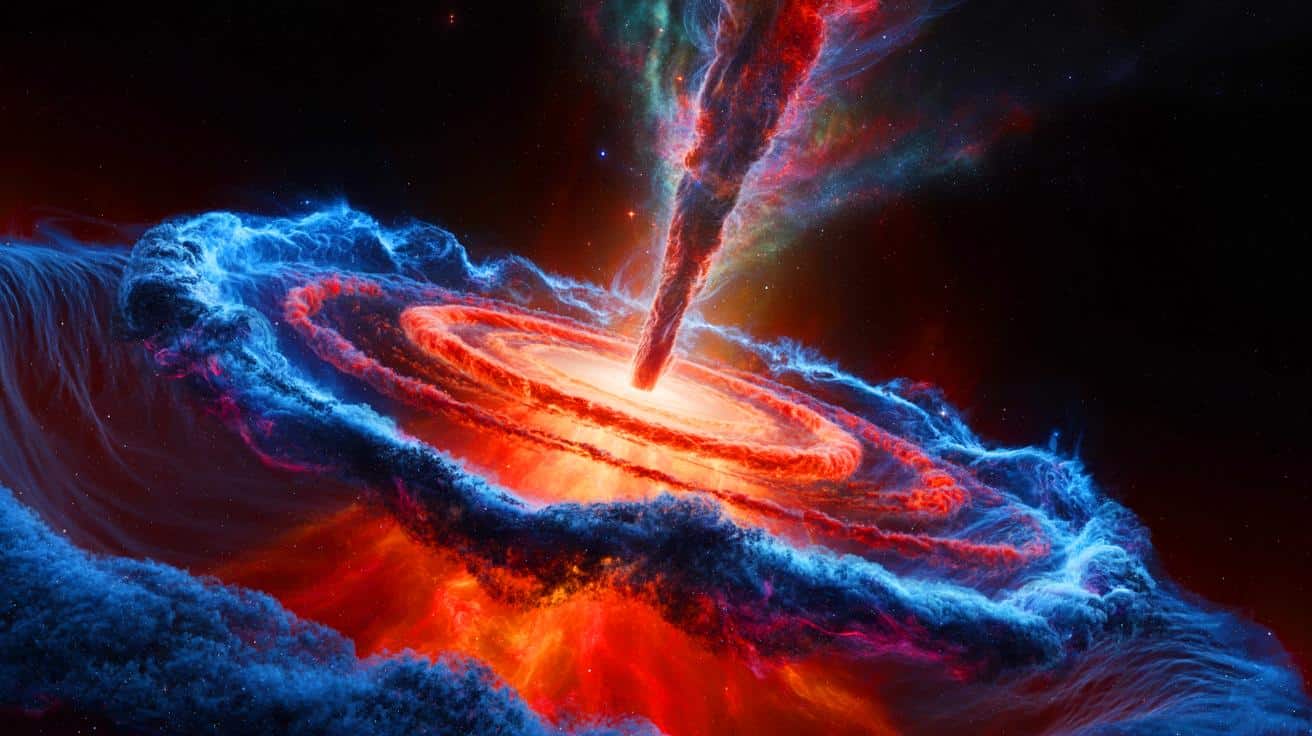- 🌌 Physicists propose the universe may eventually collapse under its own gravity due to evolving dark energy.
- 🔍 A new model suggests a finite lifespan of 33.3 billion years, with less than 20 billion years remaining.
- 🪐 The study highlights a negative cosmological constant (λ) that could reverse the universe’s expansion.
- 🔬 The role of axions is explored as they influence the universe’s expansion and potential collapse.
The universe’s fate has long captivated scientists and the general public alike, leading to numerous theories and models about how it might evolve or ultimately end. A recent study suggests an intriguing possibility: the universe may collapse under its own gravity following a finite timeline. This idea challenges the previously held belief that the universe would expand indefinitely. New calculations propose that dark energy, a mysterious force driving the universe’s expansion, could be evolving, resulting in a universe with a lifespan of approximately 33.3 billion years. With the universe currently being 13.8 billion years old, this suggests a little less than 20 billion years remain before a potential cosmic collapse.
The Role of Dark Energy and Cosmological Constant
Dark energy, a force that has puzzled scientists for decades, is believed to play a vital role in the universe’s expansion. Recent discoveries hint that dark energy may not be constant, as previously thought, but instead could be evolving. This evolution could lead the universe to eventually collapse, an idea supported by the work of physicists Hoang Nhan Luu, Yu-Cheng Qiu, and Henry Tye. According to their model, dark energy’s influence will persist for another 11 billion years, allowing the universe to continue expanding before it ultimately halts and reverses direction.
The cosmological constant (λ), introduced by Albert Einstein in his theory of general relativity, is central to this discussion. A positive λ supports the universe’s expansion by acting as an outward force. However, if λ is negative, it could act as a pulling force, potentially reversing the expansion. Recent observations suggest that dark energy might be associated with a small negative λ, indicating that the universe’s expansion could eventually be halted and reversed.
Axions and Their Influence on the Universe
The study also introduces axions, ultra-light particles that could help explain the universe’s current behavior. Axions are envisioned as a smooth, ghostly field throughout space, influencing the universe’s expansion. In the proposed model, axions initially drive the universe’s expansion but gradually lose their influence over time. This weakening allows the negative λ to take over, eventually bringing the universe’s outward expansion to a standstill.
Once the axion’s influence diminishes, the universe is expected to contract, potentially leading to a Big Crunch. This concept is likened to riding a bike uphill with a tailwind; as the tailwind subsides, the ascent slows, eventually stalling before a rapid descent. In this scenario, the universe’s contraction would be quicker due to the axion’s kinetic energy and increasing gravitational pull, culminating in a cosmic collapse.
Big Crunch: The Opposite of the Big Bang
The Big Crunch is theorized to be the reverse of the Big Bang, where all matter in the universe converges into a singularity. This idea challenges the long-held belief that the universe would continue to expand indefinitely. While this theory is captivating, it is essential to note that it remains speculative. The scientific community needs more data to validate the potential evolution of dark energy and the role of axions in the universe’s fate.
Despite the uncertainty surrounding the Big Crunch, the possibility of a finite universe lifespan provides a potential answer to one of cosmology’s most significant questions. Understanding whether the universe has an end is as compelling as understanding its beginning. As research progresses, scientists hope to gain more insights into the forces shaping the universe and its eventual fate.
Unanswered Questions and Future Research
While the study presents a thought-provoking scenario, many questions remain unanswered. The true nature of dark energy is still unknown, and it may not involve axions or axion-like particles. Alternative explanations could emerge as more data becomes available. Researchers must continue to explore and analyze the dynamics of dark energy to gain a deeper understanding of its potential evolution and impact on the universe.
The scientific community remains committed to unraveling these cosmic mysteries. The study’s implications extend beyond theoretical interest, potentially reshaping our understanding of the universe’s past, present, and future. As scientists delve deeper into these questions, they strive to answer fundamental queries about the universe’s origins and ultimate destiny.
As we contemplate the universe’s potential collapse, we are left with a profound question: How will our understanding of dark energy and cosmic forces evolve in the coming years, and what new discoveries might alter our perception of the universe’s fate?
This article is based on verified sources and supported by editorial technologies.
Did you like it? 4.4/5 (20)
